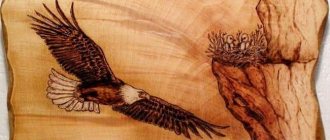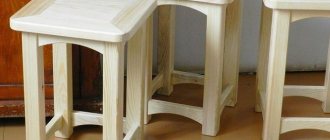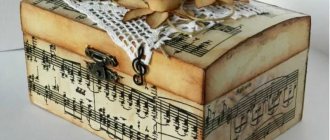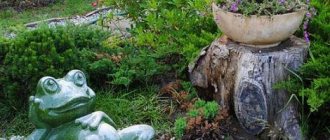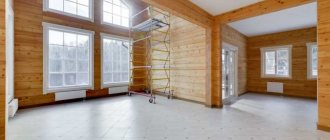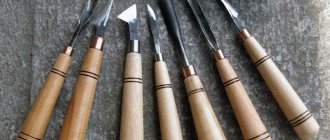The apple tree is a deciduous tree, the genus Apple tree belongs to the Rosaceae family. The apple tree grows up to 15 meters in height. There is a wild apple tree. In Russia, wild apple trees grow in the European part of the country and in the Caucasus. Apple trees and cultivated varieties are grown throughout the country. Apple wood products are presented in the article.
Apple tree
All types of apple trees are excellent honey plants. In total, more than fifty species of apple trees are known around the world.
Wood species. Apple tree
The apple tree is a widespread tree on our planet. There are about 50 species of this tree species in nature. Under natural conditions, they grow up to 20 meters in height, forming a trunk with a diameter of up to 45-50 cm. The average lifespan of an apple tree is 40-50 years, although there are individual two-hundred-year-old specimens. The wild apple tree has a straight trunk, which makes it possible to obtain long lumber from it. On an industrial scale, wood is harvested from trees aged 20-40 years, since older trees are often damaged by rot.
The cultivated apple tree is more widely known, as it is grown throughout the territory of the former Soviet Union. And harvesting wood from cultivated species is more accessible specifically for the home craftsman. But it is difficult to obtain large pieces from a domestic apple tree. Its trunk is short, crooked and rarely healthy. Therefore, when uprooting old trees, thick branches are usually used as the starting material for the work.
History of beading
An ancient, widespread type of creativity develops simultaneously with the advent of new fashion trends and progress in society. Small glass and plastic beads with a through hole are used for weaving jewelry, headbands, and creating various compositions.
The birthplace of beads is Ancient Egypt. Interest in the material began with the advent of glass more than 3,000 years ago. At first, large opaque beads were used to decorate the clothes of the pharaohs, then they began to simply string them on a thread and use them as beads. The invention of mesh hemming made it possible to produce individual products from round material. Patterns and diagrams were developed, beads were combined with precious stones and metals.
Products made from beads were so good that the Egyptians began to exchange them and turned them into items of trade. Thus, beadwork spread throughout the world. In the 12th century, the capital of beads and related needlework was Venice, which once received settlers from Greece.
In the 18th century, glass factories appeared in France, Germany, America, and Bohemia. Special machines speeded up the production of the material, which affected its price. European fashionistas began to show great interest in beads. They used it to embroider clothes and decorate wallets and handbags. In the 20th century, beadwork reached its peak of popularity. Now unique paintings, panels, all kinds of decor and accessories are made from it.
Apple wood processing
Apple tree wood is quite hard, so it requires a sharp tool for processing. But the cuts come out very clean, it cuts in all directions without chipping.
Works very well on lathes.
Due to its homogeneity, wood can be easily sanded, forming very smooth surfaces for further coating with varnishes and polishes.
It glues easily and can be painted with mordants and stains, acquiring a dark brown color.
Small items can be made from raw wood, as it is easy to cut. But at the same time there is a high probability of cracking of the finished product.
Apple wood is practically not used for bent products.
Weaving techniques
Anyone can learn to weave with beads. To do this, you will need to choose the scheme you like and study the techniques used in it. Flat, three-dimensional products are created in various ways, using large, small, elongated beads. You need to start with the simplest master classes, mastering more complex ones over time. You can create with beads using any technique. There are the following types of weaving:
- Needle-shaped. The simple version is usually used to create individual details of the composition (flower stamens, insect legs). Several beads are strung on a wire, the last one is bent around and the base is threaded through the next one and tightened.
- Flat parallel. The most popular and simple technique. It is used for weaving leaves and petals. The wire is passed through the beads according to the pattern, creating a new parallel row.
- Volume parallel. The principle of operation is identical to the parallel method, but the rows are not located in the same plane. This is how they make animal figures, flower buds, etc.
- Hand weaving. Weaving is done on one thread. The beads are connected to each other along the vertical and horizontal axis, grabbing beads from the adjacent row with a fishing line and gradually increasing them. The patterns are designed for bracelets, paintings, and decor for flower pots.
- French. Beads are strung on two ends of the fishing line and arcs are made, capturing the outer beads. The technique is suitable for making flowers and tree leaves.
- Monastyrskoe. The base is a cross of 4 beads. By increasing elements of the same type, a finished product is obtained. Suitable for flat and voluminous crafts.
- Looped. The finished elements look like loops. In this way, individual components of the composition are made or used as a basis. Several beads are strung on a wire and tightened in a loop, an indent is made and the steps are repeated.
- Mosaic. Weaving with tight fitting beads. Each piece is attached vertically, sandwiched between two beads of the adjacent row. Stringing can be circular or cylindrical.
- Mesh. In this way, various objects are braided, for example, Christmas tree decorations, flower stands, beaded trees, vases. The size of the mesh cells is determined by the number of beads.
- Brick stitch. The arrangement of beads in horizontal rows resembles brickwork. The beads in each row are located with a slight offset relative to the adjacent strip. The technique is suitable for creating flat, three-dimensional shaped products.
Apple products
Apple wood makes excellent kitchen utensils. Spoons and various spatulas not only look beautiful, but also last for many years.
Various turned products for dry products look great. These are salt shakers, bowls, dessert trays.
Apple tree knife handles are not only beautiful, but also have high performance properties. This wood makes excellent blocks for planes, marking tools (squares, rulers, surface planers), and handles for tools.
Dense apple wood is an excellent material for small carvings. Boxes and turned products that are decorated with fine geometric carvings look very good. Craftsmen make various jewelry from apple trees - pendants, brooches, beads.
Apple wood is used to make small overhead furniture elements. Veneer is used to decorate interiors. Apple parquet lasts for decades, while remaining beautiful.
Thin planks cut from the butt part of an apple tree trunk have a very beautiful wavy pattern. This material is used to make various boxes and snuff boxes.
Recently, cases of exclusive mobile phones, computer monitors, and removable storage devices (flash drives) have begun to be made from apple trees.
More articles from the section Wood processing
Source of the article: https://hobbywood.ru/porody-drevesiny-yablonya/
Beads - types and tips on how to choose
You cannot take the first bead you come across to make a craft you like. The appearance of the product, the durability of the connections and the correct repetition of the circuit will depend on the quality of the materials. Miniature beads are made in Taiwan, China, India, Czech Republic, and Japan. All manufacturers produce beads of different sizes and purposes. It comes in form:
- Regular - glass beads with a through hole, round, square, and fused edges;
- Cutting - short tubes no more than 2 mm in length.
- Bugles are longer tubes from 3 mm to 25 mm. There are smooth, twisted, faceted.
When choosing beads, first of all, you should pay attention to the manufacturer. The best are Czech and Japanese. Then the whole bag needs to be examined carefully. All beads should be the same size, the cutting should be smooth without a crooked cut. The presence of chipped, unpainted beads is excluded.
Apple wood
Apple wood: properties
Apple wood is surprisingly hard, resistant to wear, and has extremely high strength, comparable to oak wood. The strength of apple wood increases when treated with drying oil, as well as when treated with linseed oil. Apple wood can be sanded, polished, peeled. When working with tools, the cuts on the wood remain smooth, so it is used for the manufacture of decorative products, which are often used for elegant carvings.
Apple tree veneer is good for lining cabinet furniture, cabinets, for lining kitchens, dining rooms, bedrooms, and living rooms.
Apple wood: texture and color
The wood of the apple tree is red-brown in color. If you soak it in drying oil or, for example, linseed oil, it becomes dark brown and has a noble, refined color. Some trunks of apple trees that grew in a helical shape have a wavy pattern, which in itself is very interesting and original. And after appropriate processing and polishing, such an ornament takes on an unusually luxurious appearance.
The texture of the apple tree wood is uniform; when cut, small lines are visible, which are slightly darker than the main wood of the core and sapwood, and have a dark brown color.
Weaving patterns and how to read them
Creating crafts or jewelry from beads requires perseverance, diligence, and a strict sequence of actions. For this, many schemes have been developed to help you choose the right size and amount of material. They can be found in special magazines, newspapers, and downloaded from the Internet. Not all materials contain complete information or a detailed description of the progress of work. Often the problems are:
- The beginning and end of the diagram are not indicated;
- The rows are not numbered;
- It is difficult to understand the direction of the thread when weaving;
- Poor print quality, unclear image;
You should start learning by mastering basic techniques. The more practice you have, the clearer more complex patterns will become. Such processes will be deposited in tactile memory; when visually perceiving the pattern, indicating the direction of the thread will no longer be necessary.
On any beading pattern, the details are marked with circles and highlighted in color. The numbers at the beginning of each row indicate the number of beads. The number of rows is marked above the picture. If the product is multi-colored and voluminous, then next to each dot there will be a number indicating the number of beads in one set.
Interesting facts about wicker trees
A tree made of beads, made with your own hands, not only absorbs the positive attitude and emotions of the needlewoman, but is also a talisman that transmits the energy of a natural plant. The image of each tree symbolizes a certain mood:
- Pine is an image of unfading life, silence, solitude;
- Sakura is a symbol of the awakening of nature, the birth of a new life;
- Rowan - a female tree gives youth and beauty;
- Oak – strength and longevity;
- Palm tree is a symbol of victory and triumph;
- Apple tree – promotes health, a happy marriage;
- Cherry - blooms flowers before leaves, symbolizes nudity, tenderness, purity;
- Money tree - sets you up for prosperity, gives confidence;
- Willow – the “witchcraft tree” is associated with the concepts of cyclicity and rhythm.
What will you need to complete the craft?
In order to make a beaded apple tree, you need to prepare some materials and tools. Of course, you will need beads of several colors (including green (50 g), white (40 g), pink (10) shades). We advise you to purchase Japanese or Cheap Chinese and Taiwanese glass beads; you should not use them - they are not of high quality. In addition to beads, you will need two types with a thickness of 0.4 mm (for the branches) and 1 mm (for the trunk). To decorate the tree you will need thick woolen threads, building plaster, a wide pot with low sides and decorative stones. Once all the necessary materials have been prepared, you can begin making the product.
Making apple tree branches
After making all the flowers, you can start making the leaves. To do this we will use the circular weaving technique. We take a thin wire and cut a piece about 65 cm long from it. How is an apple tree made from beads? The scheme is as follows: string seven green beads onto a wire. Then we form a loop and collect sixteen more beads. Now we pass the working wire around the first small loop. You get the first leaf. Now we make another exactly the same leaf on one of the ends of the working wire.
Twist the ends of the wire several times. We take a white flower and carefully screw it to the workpiece. We weave two more leaves on the wire (by analogy with the first). Attach the second bud. We create two more leaves and attach a third flower. So, the very first branch of our apple tree is ready. In order for the tree to look lush and rich, twenty-nine more such blanks will be needed.
Apple structure
If you look at a cross-section of an apple, you can see its internal structure. The outside of the fruit is covered with a skin that protects the fruit from the penetration of pathogenic organisms and from loss of fluid. The skin also takes part in the gas exchange process.
In the very center of the apple there are seed chambers - reservoirs for storing seeds.
Between the peel and the seed chambers is the pulp of the fruit - the same one that is eaten. Its color, consistency and taste are varietal characteristics. There are fruits with greenish flesh, white, yellowish, and with pink splashes. By consistency – dryish, loose, or juicy and strong. When the fruit is overripe, the pulp becomes grainy and dry. The pulp is a very valuable and healthy product, containing many vitamins and fiber that promote good digestion.
Also, when examining an apple in a longitudinal section, you can see a depression, the so-called funnel. A stalk emerges from it, with the help of which the apple is attached to the branch. On the opposite side of the fruit there is also a small depression containing sepals. The depression is called a calyx pit, and there are five sepals in it.
Tree of happiness made of beads: master class with step-by-step photos.
Nowadays, you rarely find a house in which the tree of happiness does not “grow”. This talisman has firmly won the hearts of millions of people. Even if you don’t believe in its magical properties, the tree of happiness is a good interior decoration. You can use this craft as a gift for family and friends. We offer you a master class on creating this magical tree of happiness from beads.
To create this craft we will prepare:
If everything is ready, let's start creating crafts and prepare lilac beads.
String a lot of beads on the wire in random order.
We take 10-11 pieces of beads aside.
Bend it into a ring and twist the ends of the wire 2-3 times.
We repeat the procedure. There should be a gap of 1-1.5 centimeters between the turns.
We twist 13 such rings on a wire.
We bend the part in the middle and connect the ends of the wire.
Twist both ends together.
We bend everything towards the center. You can do this by pulling a twig through your fist. The result is one branch for the tree of happiness.
We prepare at least 30 such branches.
Using the same principle, we make 10 emerald-colored branches. The difference is the size of each ring - 5 pieces of beads.
We twist three pink branches together so that 1-2 centimeters remain untwisted before the beginning of the rings.
Add to them three more pink branches and two green ones. Twist the ends of the wires tightly.
We wrap twine or tape around the free end of the wire. Let's secure it. The result was a blank barrel. We make four more such elements.
We connect all five blanks by twisting. We strengthen it by wrapping the trunk with thick wire. The top layer is twine.
We make a slide out of foam plastic using construction tape.
We install the craft on the resulting slide. We straighten the ends of the wire to the sides, as if clasping a hill.
We dilute the plaster according to the instructions. We lay our foam slide with gypsum mixture, while grasping the tree trunk. We are waiting for the plaster to dry.
We paint the branches of the craft brown.
At the foot of the tree we draw a clearing. We paint the foam around it like rocky soil. To create a realistic effect, use different colors of paint.
We “plant” beaded flowers in the clearing.
Preparation of flowers is prepared according to the same principle. We combine multi-colored beads. Here is the connection of two parts.
We insert them into the foam in place of our clearing.
A wonderful and original gift – the “Tree of Happiness” is ready to delight its owner.
moy-karapuzik.ru
